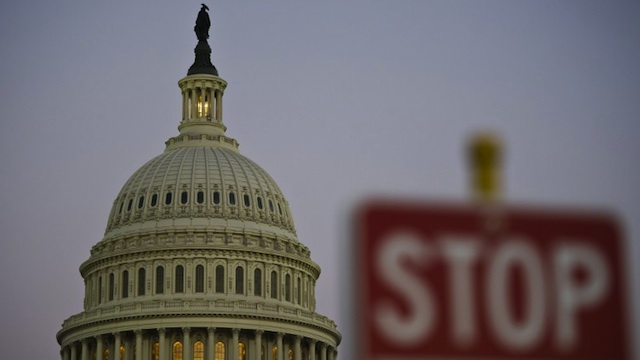SUMMARY
This is AI generated summarization, which may have errors. For context, always refer to the full article.

MANILA, Philippines – The Philippines faces “nightmare” scenarios if the United States defaults on its debt obligations, according to Finance Secretary Cesar Purisima.
The US has until Thursday, October 17, to raise its $16.7-trillion debt ceiling before its government runs out of money to pay off its obligations.
The impact on the Philippines will mostly be on the macroeconomy level — growth rates, cost of borrowing — and may trickle down to the rest of the population in time. (READ: US Shutdown on PH, best, worst case scenarios)
“Emerging markets will see their growth blunted and Europe will be thrown violently back into recession. This is a nightmare scenario of the worst sort,” Purisima has warned in an October 11 statement.
A debt ceiling is the legal limit a government is allowed to borrow.
The finance secretary was taking off from a likely scenario: another global recession. International Monetary Fund (IMF) Head Christine Lagarde was among those who gave this warning through her October 13 interview on NBC. (READ: World fears US default, Obama warns)
Slower growth for PH?
University of the Philippines (UP) Professor Ernest Pernia in an interview with Rappler said a US default would result in higher interest rates in all economies, a condition detrimental for any country.
US interest rates, he said, are used as a global benchmark, and any increase in the US rates will also increase interest rates across countries.
“The cost of money — interest rates — will go up. They (economies) cannot transact or use the same liquidity that they had before the default,” the economist explained.
Finance Undersecretary and country’s chief economist Gil Beltran also said in the October 11 statement that economic projections may need to be adjusted given that the country’s cost of borrowing is highly tied to the US’.
“The Philippines would have to re-evaluate economic projections in light of a US default. For every percentage point rise in US interest rates, Philippine interest rates rise by 0.80 percentage point,”
Beltran explained that percentage point increase in the interest rates would mean a decrease in the percentage points in gross domestic product growth.
“Also, for every percentage point rise in Philippine interest rates, the Philippines loses 0.36 of a percentage point in real GDP growth,” he said.
Are we ready?
Given the Philippines strong macroeconomic fundamentals, the economic managers agreed that the country has measures in place to combat the effects of a possible global economic slowdown.
Bangko Sentral ng Pilipinas Deputy Governor Diwa Guinigundo in a text message to Rappler said: “We have done our homework. We have a package of measures that we can consider in a calibrated fashion as the need arises.”
Beltran said the country has enough room to make the adjustments needed to counter any possible economic slowdown.
“Fortunately, thanks to our strong and structural current account surplus, which was at 4.4% of GDP for the first half of the year, the Philippines has room to offset these negative effects through monetary and fiscal stimulus,” Beltran said.
The Philippines posted P22 billion surplus in August, and has $ 83.029 billion in gross international reserves as of September.
Pernia, however, warned that the country may be far from being insulated from the consequences of higher interest rates in the US despite high reserves and surplus.
“[The GIR] is going to run out very quickly, dwindle quickly. We would need to use those reserves to pay our debts too,” he noted.
The UP professor also noted that even a high surplus may eventually be not enough as a buffer for the consequences of a US slowdown.
“Much of our surplus is in dollars and the value of US dollars will diminish. This would mean less imports, reduced purchasing power (for us),” Pernia added. – Rappler.com
Add a comment
How does this make you feel?
There are no comments yet. Add your comment to start the conversation.